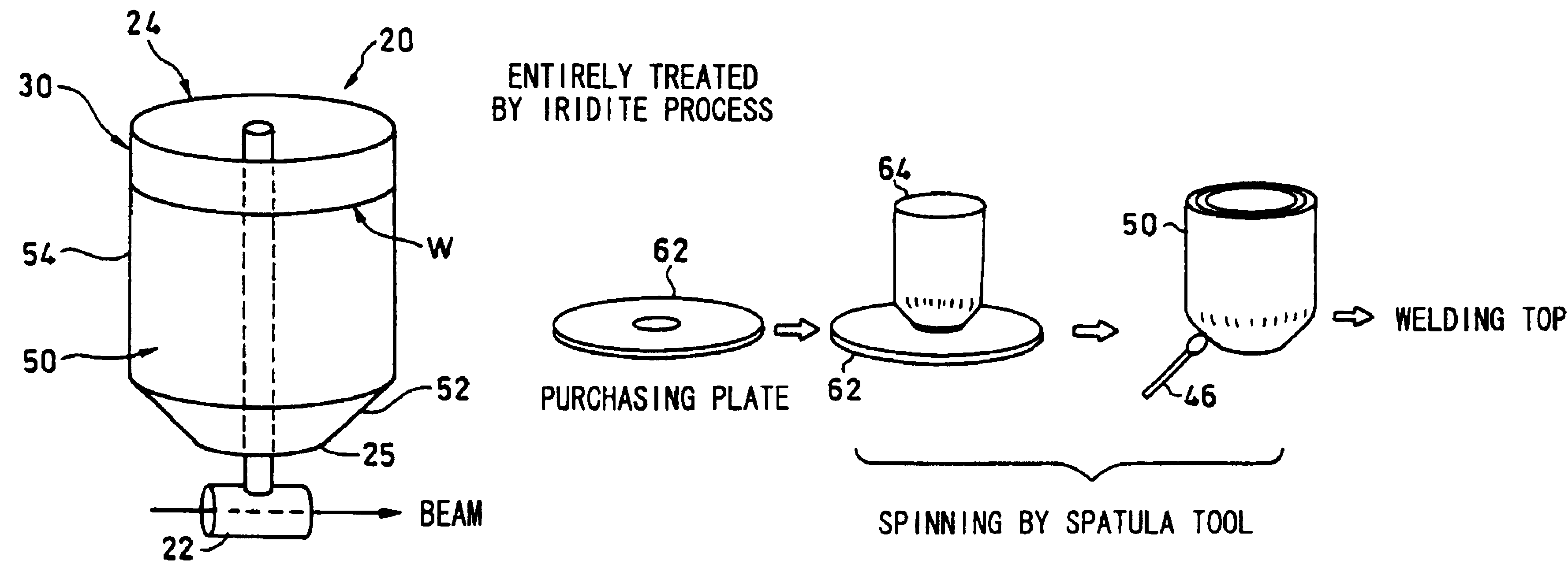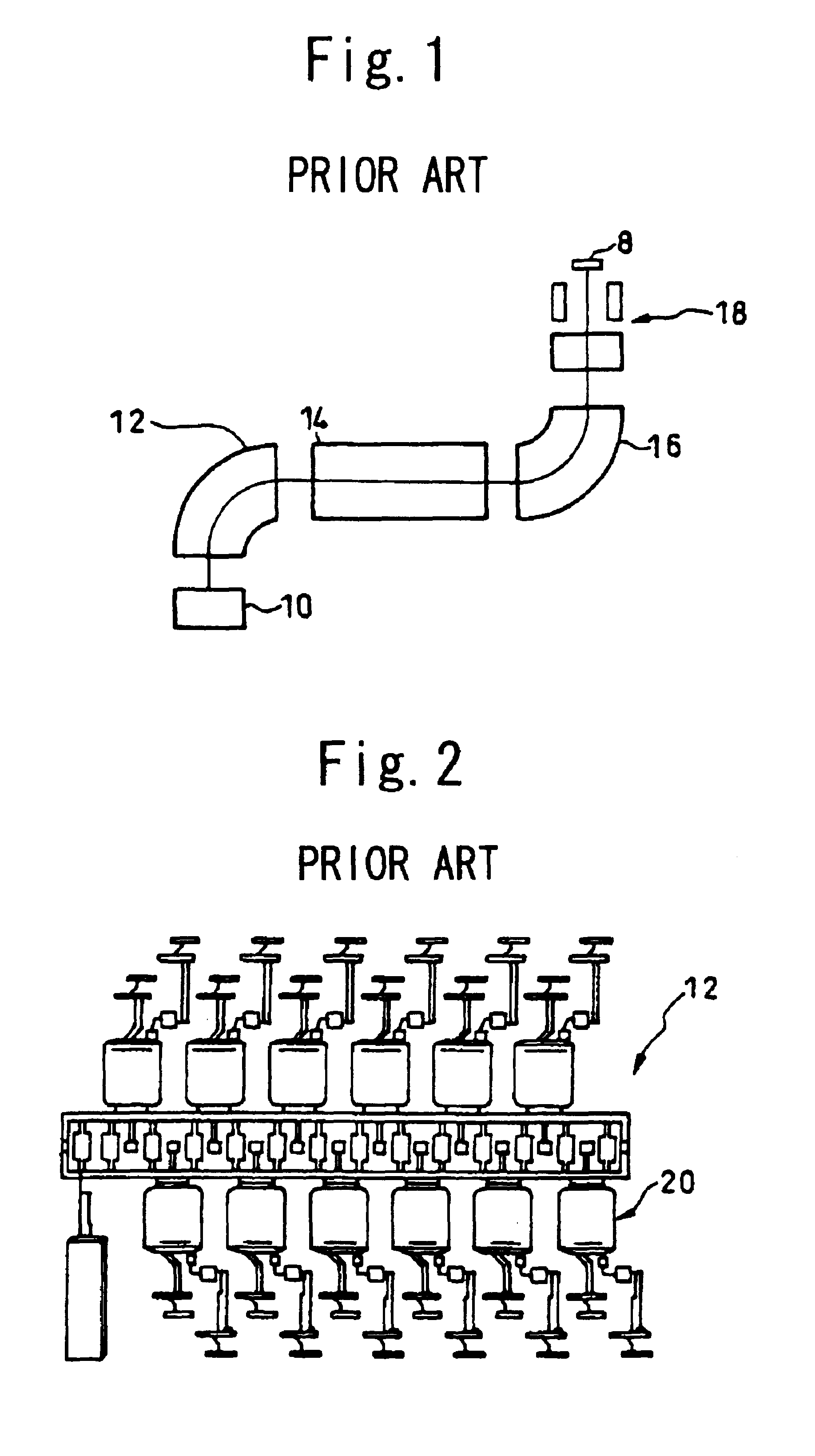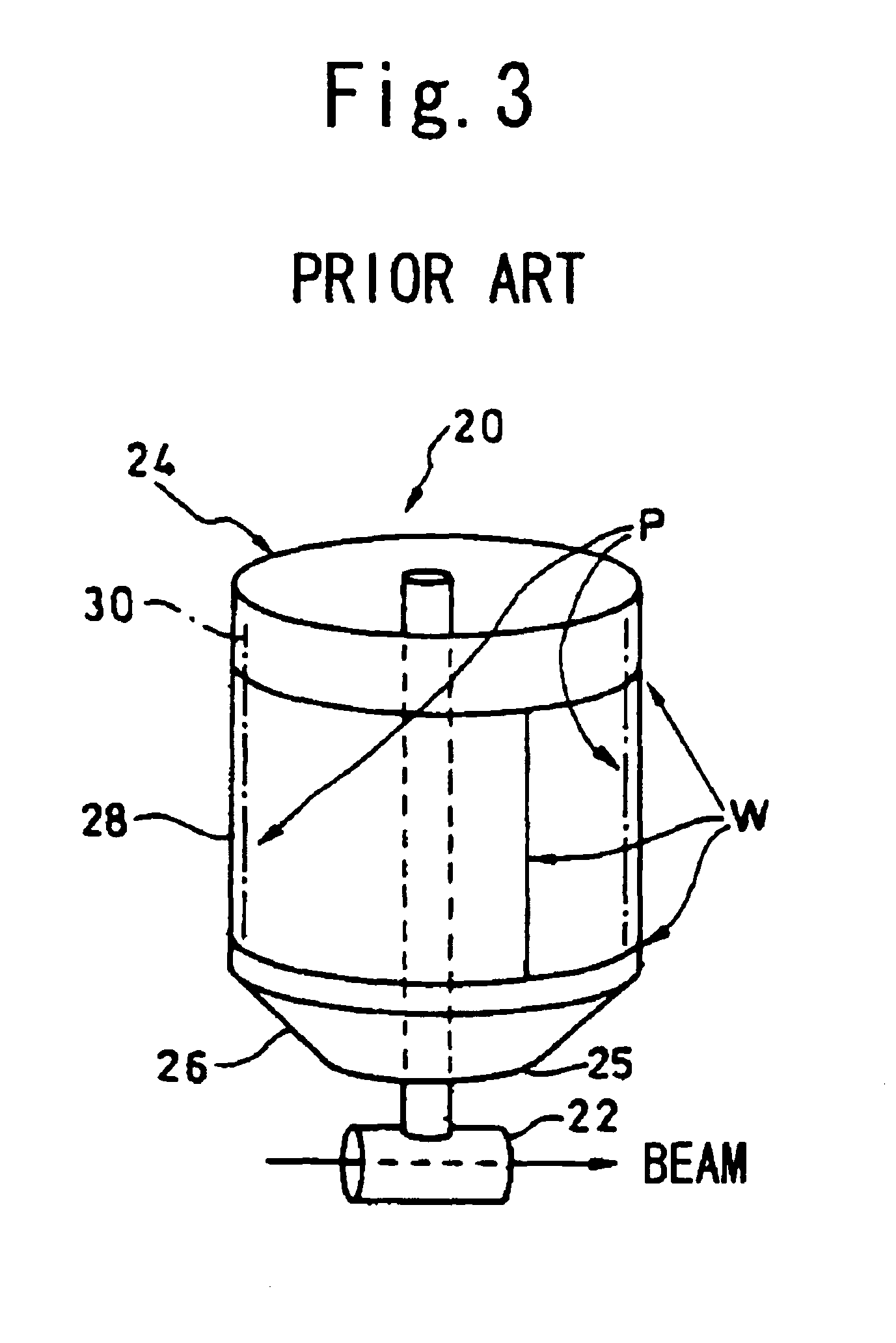Radio frequency resonator and method for producing the same
a radio frequency resonator and resonator inner surface technology, applied in the direction of resonators, accelerators, electric discharge tubes, etc., can solve the problems of radio frequency current flowing on the inner surface of the resonator, deterioration in appearance, and inability to maintain the plating thickness with enough uniformity and reproducibility, etc., to achieve the effect of increasing the electrical conductivity, and reducing the thickness of the plating
- Summary
- Abstract
- Description
- Claims
- Application Information
AI Technical Summary
Benefits of technology
Problems solved by technology
Method used
Image
Examples
examples
[0051]Expressing the electrical conductivity in terms of “International Annealed Copper Standard (IACS) Conductivity,” wherein the standard annealed copper is assumed to have 100% IACS conductivity, the conductivity of the radio frequency resonator is 43% of the conventional aluminum alloy A6061-T6, but 61%, of the pure aluminum A1050-0 used in the invention. The container of the invention has been proved to have higher electrical conductivity.
[0052]The thermal conductivity has also proved to be higher according to the invention: 0.17 kW / m° C. for the aluminum alloy A6061-T6 used in the conventional resonator, while 0.23 kW / m° C. for the pure aluminum A1050-0 in the invention.
[0053]Regarding the mechanical strength, the container of the invention is strengthened by the work hardening during spinning, but is not so strong as the conventional one made of aluminum alloy. However, by increasing wall thickness to, for example, 3.1 mm or larger for the single-layered cylinder 28 and 3.5 m...
PUM
| Property | Measurement | Unit |
|---|---|---|
| thickness | aaaaa | aaaaa |
| thickness | aaaaa | aaaaa |
| thickness | aaaaa | aaaaa |
Abstract
Description
Claims
Application Information
 Login to View More
Login to View More - R&D
- Intellectual Property
- Life Sciences
- Materials
- Tech Scout
- Unparalleled Data Quality
- Higher Quality Content
- 60% Fewer Hallucinations
Browse by: Latest US Patents, China's latest patents, Technical Efficacy Thesaurus, Application Domain, Technology Topic, Popular Technical Reports.
© 2025 PatSnap. All rights reserved.Legal|Privacy policy|Modern Slavery Act Transparency Statement|Sitemap|About US| Contact US: help@patsnap.com



